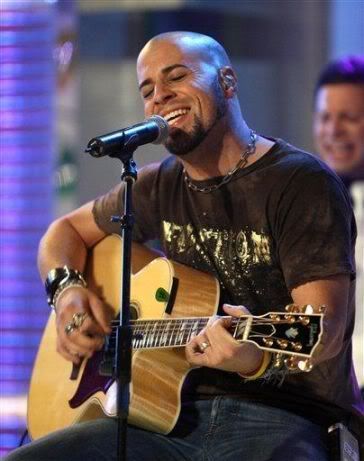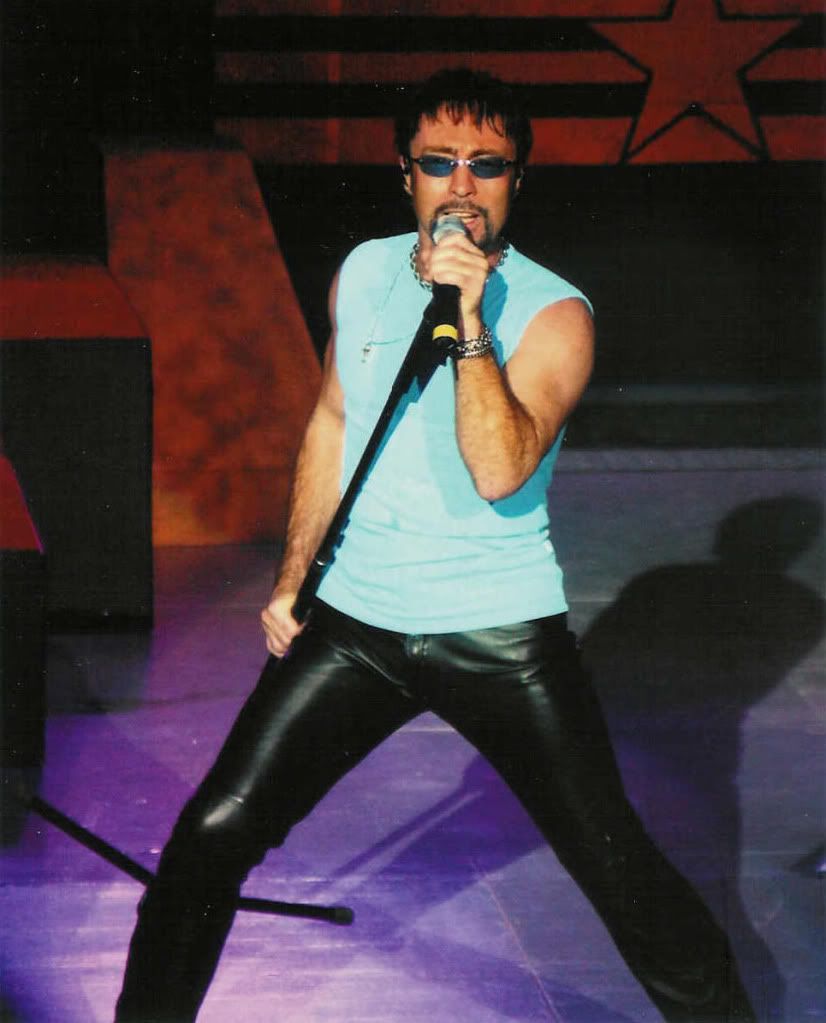Chris Daughtry Review: How to Give a Brain-Sticky Concert
March 25, 2010 by Lizabeth Phelps

I love Chris Daughtry. I love that he triumphed magnificently
after being voted off of American Idol at number 5. That his debut
album was the fastest selling debut rock album in Soundscan his-
tory. That it has been certified 4 times platinum by RIAA and has
sold more than 5 million copies.
And I love his music—or should I say his first album. Every
single song rocks and, well, I’ve listened to them on my iPod so
many times, I honestly don’t know what was a hit single on the
radio and what wasn’t; they’re all hit songs to me.
It was with that great appreciation and admiration that I excitedly
took my seat at the Prudential Center Sunday night to see Daughtry
live. I write about my experience now because it so nicely parallels
the experience any of us has when we are in an audience, and gives
clues to what we need to do when we’re in front of an audience.
 Granted, Daughtry is no Paul Rogers–my true rock idol and
Granted, Daughtry is no Paul Rogers–my true rock idol and
THE rock legend, who knows precisely how to energize an audi-
ence and keep them energized, even when he’s singing new music.
But Daughtry should have known that he has to open with a song
that spikes endorphins in his audience, a crowd-pleaser that takes
the energy in the stadium from 0-60 in seconds. Paul started a
concert I saw two years ago with “Feel Like Making Love.” What
state of mind and spirit do you think that put his fans into,
hearing that song right out of the gate? Daughtry played a new
song—which, come on, let’s get real,the audience doesn’t want to
hear. Not yet. Those amazing chemicals released from our brains
that make us feel “high” and dizzy with excitement…weren’t
released And that is a bad mistake. It sets the stage for what’s to come—and not come.
And it’s a mistake presenters make all the time.
I noticed, in spite of myself, that at the half-hour mark, I wasn’t
jumping up and down. In fact, I was sitting. In fact, most every-
one was sitting. Unless you’re watching Luciano Pavoratti, or
bluegrass or any other “listening music”—there is no worse sign
at a rock concert than an audience sitting down. It means
there’s not enough energy coursing through them to get to their
feet. Nothing impelling them to rise and move or clap or shout or
sing. It’s rare to see anyone singing passionately at a rock concert
while sitting down. No, we rise to our feet because the energy in
us is too big and powerful for the constrained sitting position. If
we’re reclining, our brains are, too. And that spells death for a
rock star (and presenter).
Why was everyone sitting? Because Daughtry was playing one
new song after another. And they’re mainly ballads—and not great
ones, at that. This is akin to giving a presentation in a flat monotone,
with nothing but Power Point, and referencing very little that is of
interest to us. Last week in the blog posts, I wrote about the brain’s
need for relevancy–what’s in it for me, and for emotion! Neither
was happening thirty-minutes into the concert. And then Chris
said something so true, and I’m wondering if he realized their mis-
take as it was unfolding (if you’re professional at all in front of a
group, you are masterful at measuring energy.) He said, “Let’s
get you guys back into familiarity.”
My brain jumped back to my blog post from last Friday, where
I talked about the brain’s need for familiarity. And low and
behold, as they started to play the very first notes of a song from
their first album, bodies began to rise instantly, instinctively. Soon,
the whole room was standing again because the familiarity of a
song they loved shot a cascade of feel-good chemicals from their
brain into their body and brought them to their feet because
sitting down was too small a feeling for what was burgeoning
within them. The band managed to keep us standing for a few
more songs, but then dropped the ball again. Lost their control
of the room’s energy. Like presenters do constantly.
This is something iconic Paul never does. Of course, he’s been
doing this forty years longer than Daughtry. But he knows
that alternating between old favorites and new ones keeps the
energy at a constant high. He also knows that the audience needs
to experience the biggest high of the night as they are walking
out. He knows he needs to build the energy to a crescendo in his
encores, until the last song he sings tips everyone over the edge.
The last song must be an all-time favorite—not one most of the
room doesn’t know.
Energy is what causes an audience to want more, tell
others about their experience, and come back for more.
If it dips for a few minutes, that’s understandable and it can be
saved. But if it dips more than once, you begin to lose your audi-
ence. Daughtry let it dip too often, and near the end, we all slid
off the cliff. Countless seats had been abandoned by the beginning
of his encore. Just as so many presentations, classrooms and
churches experience a mass exodus near the end.
Brain-Food for Thought: Do you manage the energy in your
presentations, so that your audience is feeling familiar with
your content but also energized by the content they’ve never
heard? Are you causing them to feel so they figuratively (and
literally!) “rise to their feet”? Or do they stay (figuratively and
literally) sedately in their seats because nothing you are saying
grabs at them, heart and soul, causing the chemicals of emotion
to burst through them?
If you want to hear more on this topic, be sure to sign up for my
upcoming 90-minute free teleclass on the new paradigm of public
speaking that “talks to the brains” of audiences. The next one is
April 7th. Click here to learn more.




Speak Your Mind